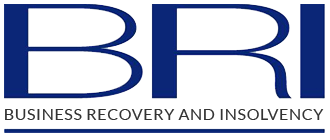The liquidation of a company is a legal process in which a liquidator is appointed to “wind up” the affairs of a company.
There are two types of liquidation:
- Compulsory liquidation
- Creditors’ voluntary liquidation (“CVL”)
At BRI Business Recovery and Insolvency, we work with clients through either restructuring or the insolvency process to help them when they are in financial difficulty. If you would like to discuss liquidating your business, or have any questions about insolvency, please contact our team.
What are the key differences between compulsory liquidation and creditors’ voluntary liquidation?
When it comes to the liquidation of a company, there are two different types. A compulsory liquidation of a company occurs when they are unable to pay their debts and a creditor takes formal steps to wind up the company. A creditor will serve a winding-up petition on the company (often submitted by an insolvency lawyer on behalf of a creditor) with the intention of obtaining a winding-up order at the scheduled court hearing.
In a CVL, the directors resolve that the company is insolvent and unable to continue trading. They send formal notice to members of a general meeting to consider a special resolution to wind up the company.
Does the company have to be based in the UK for liquidation?
For most liquidations in England and Wales, both the company’s registered office and trading premises are located here.
Predicated on advice from suitably qualified and experienced insolvency lawyers, liquidators can deal with overseas companies provided that their centre of main interests (“COMI”) is considered to be in England & Wales.
Special rules and different terminology apply to Scottish-based companies.
Who can deal with the liquidation of a company?
In a compulsory liquidation, the Official Receiver (“OR”) is appointed to assume control and protect the insolvent estate. Official Receivers are public servants within The Insolvency Service. However, creditors can ask that an insolvency practitioner (“IP”) and, in some cases, the OR themselves decide to appoint an IP.
In CVLs, an IP is appointed by the members. Creditors can then either ratify this choice or appoint a different IP of their choosing.
When does a liquidation end?
When the appointed liquidators have realised all of a company’s assets, paid the expenses of the liquidation and, where possible, made a distribution to creditors. At this point, they will issue their final account, and the liquidation will be complete.
After the expiry of an eight-week statutory period, the report will be posted to Companies House and uploaded to their website as a final measure of liquidation.
When will the liquidated company be dissolved?
Following a liquidation of a company, it will then be dissolved. Dissolution will happen approximately three months after the liquidators’ final report is accepted by Companies House.
Liquidating your Company with BRI
At BRI, we can help your organisation with insolvency and liquidation, along with other services. If you require help, support or advice, contact our team today for a free, no-obligation initial chat.
